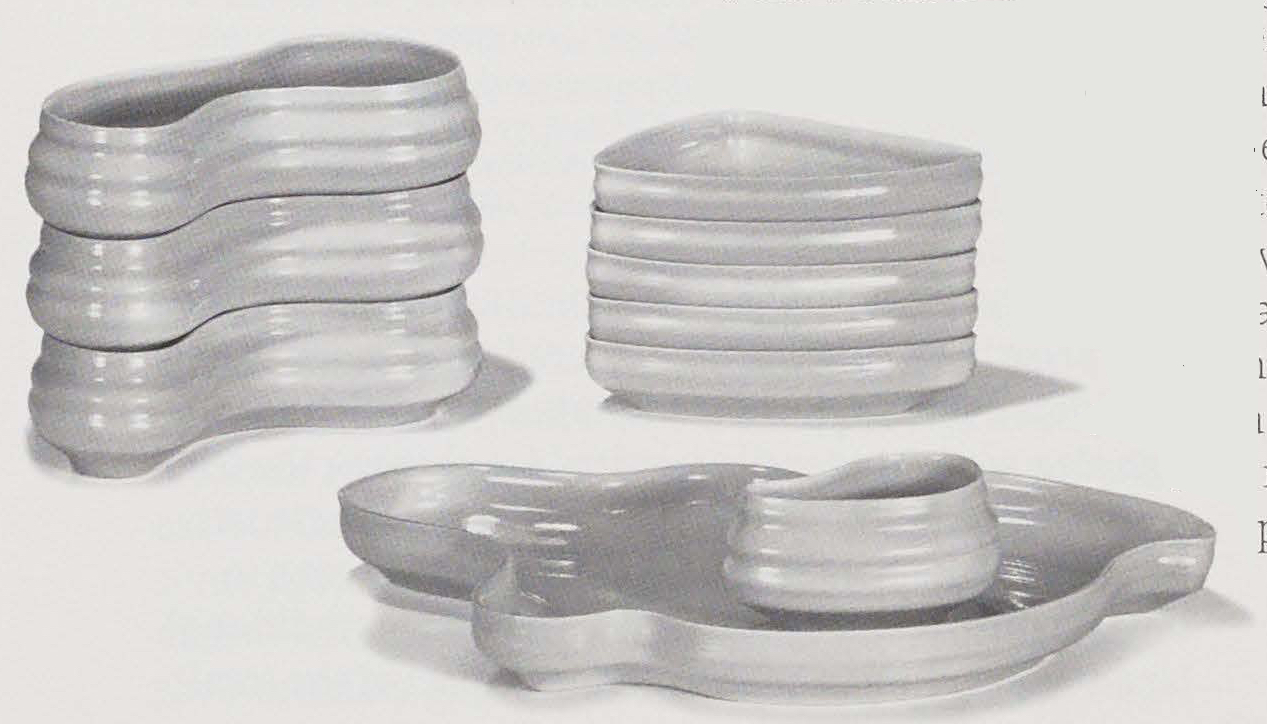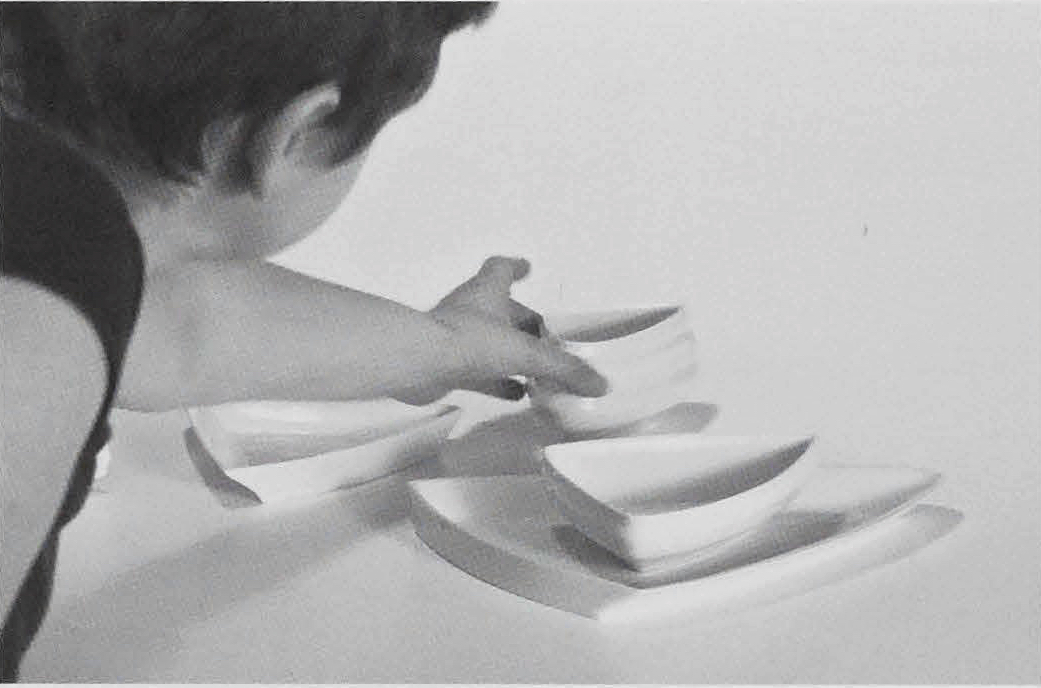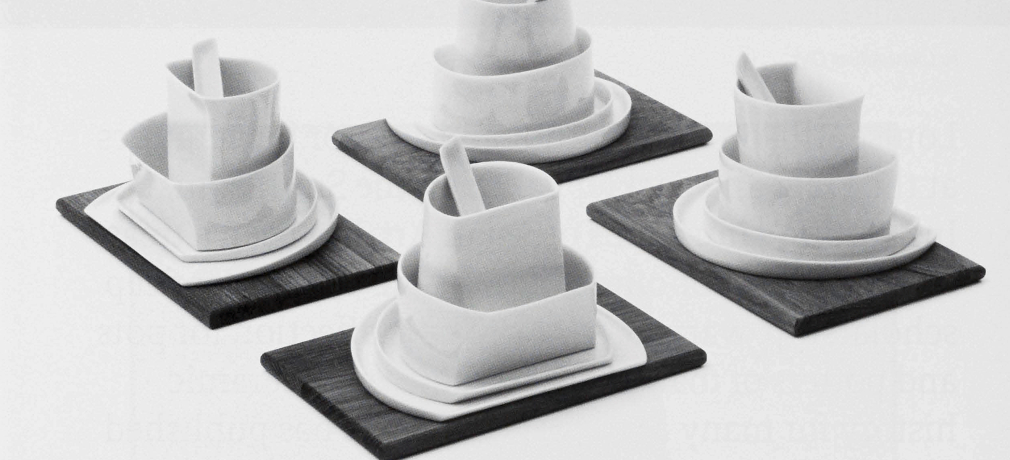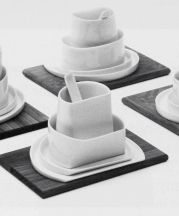I strive to share with my audience the essence of who I am: artist, of course; educator, yes; but also the human being behind the art. As I design, I am looking back into my past. In each piece, I want to present an autobiographical snapshot while still maintaining the work's ability to be affected by those who interact with it in the present. It is no coincidence, then, that my work centers on the intimacy of a shared meal. I invite my "guests," so to speak, to share in the dining ritual so that we may converse.
Significant meals and the domestic environment of my childhood have influenced my perception of the eating ritual. In recent table settings I am revisiting those aspects of my past in order to create objects for the future. One of the stories I wanted to tell in the form of a table setting was that of my father and the work he does. The fact that my father works on the railroad (as did many of my male relatives) dominated table talk as I was growing up, and later, it became clear to me that I needed to work with the movement, segmentation, and language of trains: tracks, motion, railcars.
I did not know what form this project would take, and the early investigations began not in the studio, but by researching CSX, the company my father works for. "How Tomorrow Moves" is the company motto, and it seemed like a perfect beginning for this project. I printed images of trains, yards, and tracks and thought about every possible angle from which to view this subject matter. Rather than attempt any direct visual representations of the obvious, I tried to capture the sensation of movement: of transporting goods and the interaction of the railroad and cars as they move across the land. The title of the resulting work, Rail and Track, first came into my mind when I began making molds using the sledging process, in which wet plaster is extruded along a track and shaped with a profile tool before it sets up and becomes solid. This piece also draws on my past training on the potter's wheel, because I appropriated the cross sections of two pots that I had thrown. The piece speaks about speed, time, and motion while referring to the movement of the potter's wheel. How fitting that the work was created in part on a rail and track. Not only do the individual pieces move, but, equally important to me, their overall configuration suggests interactions and movements along a line, or even two lines moving in opposite directions.
In another way, the placement of my pieces whether on a dining table or in a gallery - draws much from my experience as a dancer in ballet, tap, jazz, and precision dance. Design, to me, is like dancing. Each step in my creative process is driven by a rhythm and beat. When I was a child, my parents' bathroom had three opposing mirrors and I enjoyed playing with the infinite reiterations of my body. It thrilled me to see my reflections move with complete proportional perfection. Just as bodies come together on the stage to capture a moment in choreography, my pieces, like dancers, come together on the table.
When I am creating a place or table setting, I instinctively know visually and relationally where each piece is to be placed. When my pieces are in use, however, the overall work is suddenly rendered incomplete in my mind, as if a dancer were plucked from the stage in the middle of a show. It is only when the components are returned to their specified locations that the piece of work is whole again. A single unit, a cup or a spoon, is not made less by use, but it is certainly transformed by changing its relationship to the table, to the body, and to other objects. My work cannot be simply placed; it must be installed with strict attention to configuration and alignment. Extending the dancer analogy, I need to have my vision of the choreography executed precisely by the company. As the "choreographer," I have learned to be more direct with galleries and museums with regard to the importance of placement and relationship in my work, so as not to compromise my vision of the whole.
Take, for instance, Foursquare. I was inspired to create this piece by the childhood game of the same name. Despite the work's intended audience of adults, I wanted to give the overall impression of children and play. Even the spoons could remind someone of a Kit Kat candy or Fun Dip stick. As in such a game, imagine how different this work would seem if the settings, children, or players were set farther apart. Closer together? Not in a square, but perhaps in a rectangle such that only two players were close enough to interact? In other examples of my work, I place volumes in relation to one another in order to suggest interesting dining situations and social inter actions. As different as the experience of a great ballet would be between viewing it from the balcony and walking amongst its dancers, I am drawn to highlighting the contrast between the grand ness and anonymity of a long formal dining table and the intimacy of a shared plate.
I am represented in my work's layers and parts. The individual pieces are inspired by my experiences, past and present, as are their configurations. I hope that one day my work, taken together, will tell my whole story.
 Share
Share

